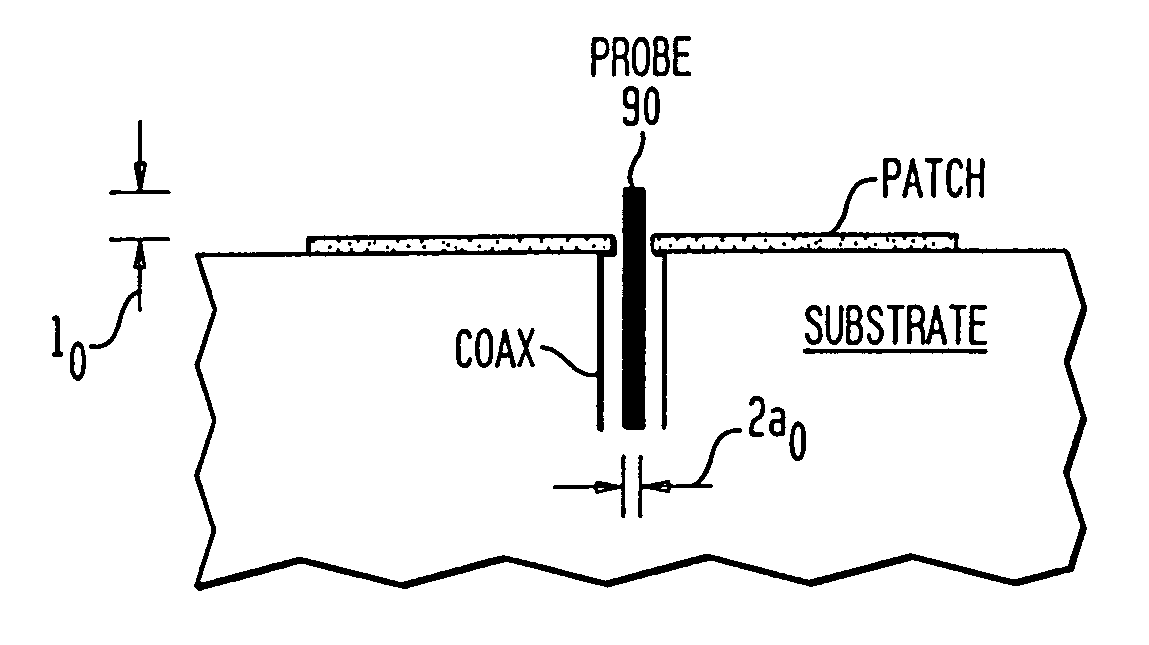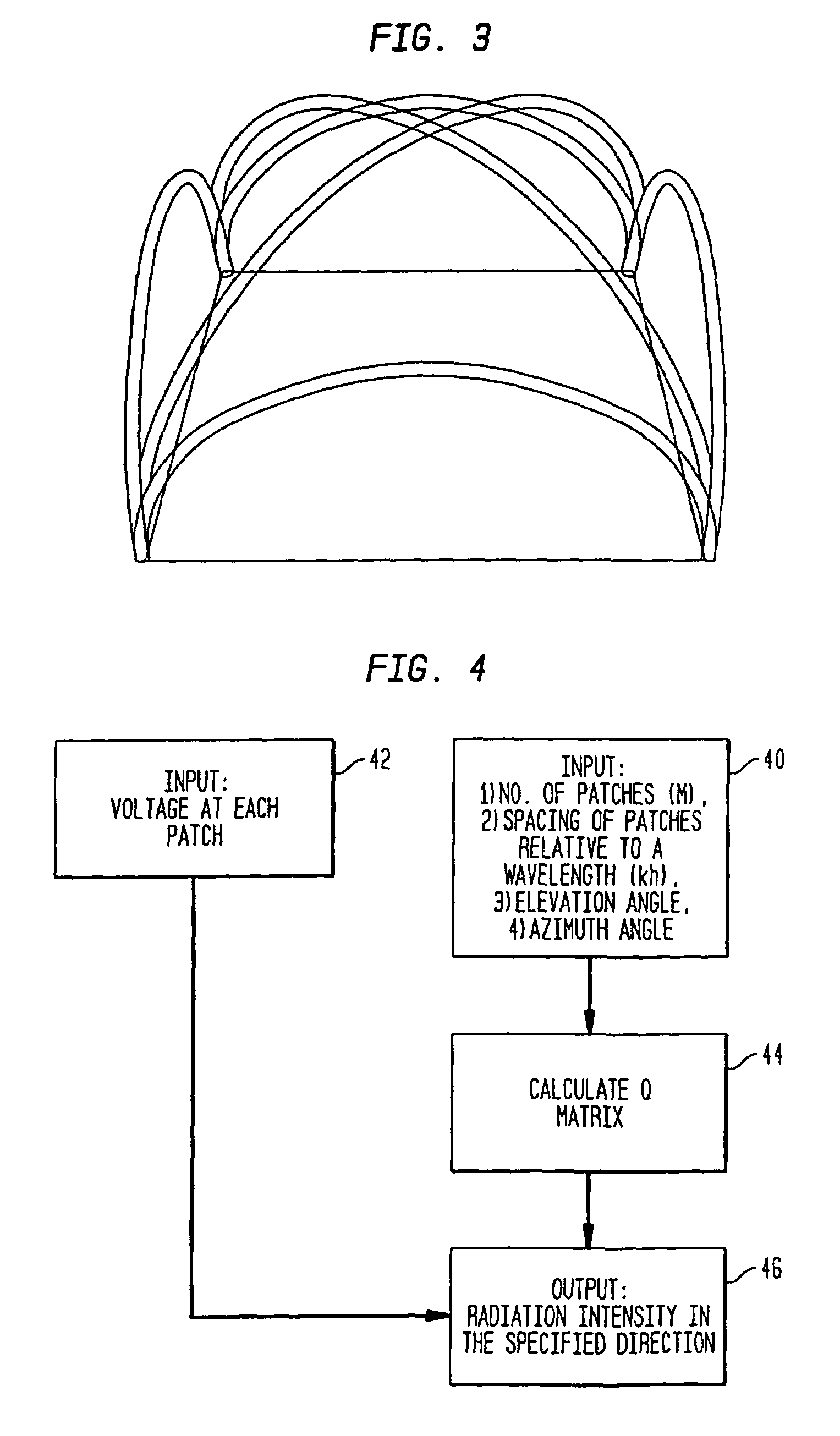Systems and methods for providing optimized patch antenna excitation for mutually coupled patches
a patch antenna and excitation technology, applied in the field of antennas, can solve the problems of limited insight into the radiation mechanism, low efficiency, low power, etc., and achieve the effects of enhancing radiation, improving efficiency, and particular susceptibility of array elements
- Summary
- Abstract
- Description
- Claims
- Application Information
AI Technical Summary
Benefits of technology
Problems solved by technology
Method used
Image
Examples
Embodiment Construction
[0031]The following detailed description of preferred embodiments is divided into the following sections for ease of reference. Section I provides a general overview of features and advantages of an antenna array that operates under differential-mode excitation according to the invention. Section II provides a detailed discussion of preferred and exemplary embodiments of systems and methods for providing differential-mode excitation of an antenna array according to the invention. Section III discusses various embodiments for feeding voltages or currents to an antenna array for operating the antenna array in differential-mode. Section IV provides a detailed discussion of a method for determining the radiation from an array of patch antennas in differential-mode operation, wherein a model is developed to determine the field structure in the air space above a patch antenna array when operating in differential-mode.
I. General Overview
[0032]The present invention exploits the discovery th...
PUM
 Login to View More
Login to View More Abstract
Description
Claims
Application Information
 Login to View More
Login to View More - R&D
- Intellectual Property
- Life Sciences
- Materials
- Tech Scout
- Unparalleled Data Quality
- Higher Quality Content
- 60% Fewer Hallucinations
Browse by: Latest US Patents, China's latest patents, Technical Efficacy Thesaurus, Application Domain, Technology Topic, Popular Technical Reports.
© 2025 PatSnap. All rights reserved.Legal|Privacy policy|Modern Slavery Act Transparency Statement|Sitemap|About US| Contact US: help@patsnap.com



